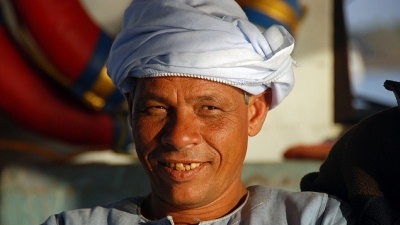Challenge
Egypt has a rapidly expanding economy that needs a reliable and low-cost source of electric power. The rate of growth of electricity demand in Egypt has exceeded 6.5 percent per year over the past 10 years and is expected to remain in the 6-7 percent range over the next 10 years. In 2002, about 95 percent of the population was served by the electricity grid in Egypt, compared to 91 percent in the region. Of a total demand of 83 terawatt hours (TWh) on the interconnected electricity generating system, 78 percent was met by thermal plants, of which 90 percent operate on natural gas and 10 percent on heavy oil, while 19 percent of total demand was met by large hydro (principally the High Dam and Aswan 1&2), and electricity from independent power producers (IPPs), including 3 percent of this amount from wind.
Solution
The objective of the project was to increase the share of solar-based electricity in the Egyptian energy generation mix, thereby contributing to the government’s objective of diversifying electric power production. The global development objective of the project was to reduce greenhouse gas emissions from anthropogenic sources by increasing the market share of low greenhouse-gas emitting technologies. The Bank was also aware that the project would be useful in demonstrating the operational viability of hybrid solar thermal power generation technology in Egypt and elsewhere. In fact, the project was one of several similar ones launched around the world with the support of the GEF, and other financing sources. It was part of a global effort to accelerate cost reduction and commercial adoption of large-scale, low greenhouse-gas emitting generation technologies through demonstration, learning and dissemination. Secondarily, the project aimed to make a modest direct contribution to the reduction of greenhouse gas emissions.
Results
The construction of the Kureimat Integrated Solar Combined Cycle (ISCC) power plant started in January 2008 and reached commercial operation as a whole at the end of June 2011. The project achieved its development objective of increasing the share of solar-based electricity generation (20 megawatt (MW)) in Egypt and contributed to the government’s objective of diversifying electric power production. Although the contribution of this project to the total solar generation capacity in Egypt is small, it demonstrated a new technology with prospects for scale-up and diversifying the energy mix, which at the moment is very expensive, but has the potential to be competitive once large markets tap into the technology. Egypt has the potential to create an industry cluster of local manufacturing of the technology. Through the dissemination of the lessons learned from this project, it is also expected to meet its global development objective of reducing greenhouse gas emissions from anthropogenic sources by increasing the market share of low greenhouse-gas emitting technologies. The implementation of the Kureimat ISCC project has helped bring greater awareness of this technology in Egypt and the region. Beyond the region, there has also been keen global interest in this plant with Egypt hosting South-South exchanges of knowledge on its construction and operation. The project succeeded in meeting the following key performance indicators:
- Total electricity generated from solar sources 35.1gigawatt hours (GWh)/year, targeted value was 33.4 GWh (based on limited data)
- Solar output as a percentage of total energy produced in the hybrid plant was 4.1 percent.
Bank Group Contribution
The World Bank provided technical assistance and managed the overall project, with the Global Environment Facility (GEF) providing US$49.8 million in grant financing.
Partners
The original co-financier was the Japan Bank for International Cooperation (JBIC), but as a result of mergers in 2008, the Japan International Cooperation Agency (JICA) took over the role. In addition, the Bank has engaged a broad range of stakeholders, including academia, nongovernmental organizations (NGOs) and the private sector during dissemination events to share experiences from the Kureimat project. There is also continued engagement with stakeholders to receive ongoing feedback on the future development of Concentrated Solar Power (CSP) in Egypt and in the region as part of the Middle East and North Africa (MENA) CSP Scale-up Initiative.
Moving Forward
In part due to the experience gained in the implementation of this project, the government is preparing its next CSP project at Kom Ombo, Upper Egypt at a scale of 100 MW. This proposed project will also receive support under the MENA CSP Scale-up Initiative. The MENA CSP Scale-up Initiative is a US$5.6 billion program (including US$750 million of concessional funding from the Clean Technology Fund) led by the World Bank Group, working closely with the African Development Bank and other European, Arab, Islamic, and Japanese donors, to implement nine commercial-scale power plants (in Algeria, Egypt, Jordan, Morocco and Tunisia), and two European Union (EU)-MENA interconnection projects.
Beneficiaries
The main beneficiaries of this project were the Government of Egypt (GoE) and New and Renewable Energy Agency (NREA), as well as the people of Egypt.

